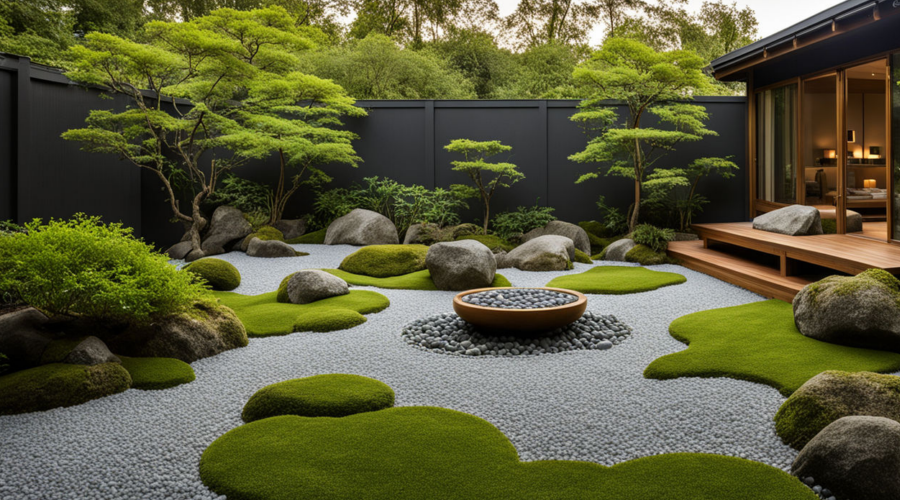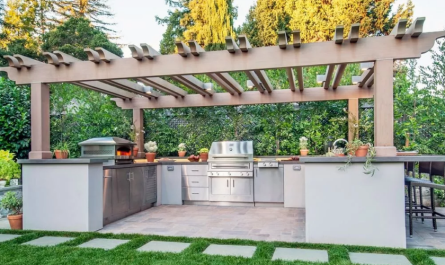Transforming your outdoor (or even indoor) space into a Zen garden is a powerful way to bring calm and balance into your daily life. Rooted in Japanese tradition, Zen gardens are minimalistic and designed to create a tranquil environment. They require only a few materials and a thoughtful layout to help you connect with nature. Follow these steps to create your own Zen garden for peace and relaxation.
1. Choose the Perfect Spot
A Zen garden can be small or large, indoor or outdoor. It can even be as simple as a tabletop garden for meditation in any room. Look for an area where you can add the essential elements: sand, stones, and a few plants. Ideally, pick a place that’s quiet and has natural sunlight.
Tip: If creating an outdoor garden, choose a space with natural shade, as Zen gardens thrive in calm, peaceful environments.
2. Select Sand or Gravel for the Base
The sand or gravel in a Zen garden symbolizes water, providing a calm, fluid base for the arrangement. Use fine white or beige sand to keep the look clean and simple. Raking the sand into patterns is a meditative practice in itself and adds a sense of movement.
- Sand: fine, smooth, easy to rake into intricate designs.
- Gravel: Better suited for larger gardens, creating a more rugged, natural look.
Pro Tip: Keep a small rake nearby to refresh the patterns whenever you feel the need to relax.
3. Add Stones for Structure and Balance
Stones are essential in Zen gardens, symbolizing mountains and nature’s strength. Use a few large rocks as focal points and scatter smaller ones for balance. Arrange them in odd numbers to maintain an organic look.
Ideas for Stone Placement:
- Place one larger stone as the main focal point.
- Use smaller stones around it to create a harmonious balance.
- Keep spacing irregular for a natural effect.
4. Incorporate Minimalistic Greenery
Plants add life to a Zen garden but should be used sparingly. Moss, small shrubs, or succulents work well because they’re low-maintenance and bring a touch of green. Bamboo plants or bonsai trees are perfect for larger spaces, while small patches of moss suit tiny gardens.
Suggested Plants:
- Moss: Soft and low-maintenance.
- Bamboo: Adds height and tranquility.
- Bonsai Tree: A miniature tree brings a sense of tradition and care.
Tip: Avoid bright, flowering plants; keep the look natural and subdued.
5. Enhance Serenity with Water Features
Water represents calmness in Zen design, and adding a water feature can bring a soothing, meditative element to your garden. If you have the space, a small fountain or a stone water basin is ideal.
- Bamboo Water Fountain: Adds sound and movement, heightening the sense of relaxation.
- Water Basin: Placed near the garden, representing purity and a quiet connection with nature.
Pro Tip: Choose a water feature with a soft, gentle flow for maximum tranquility.
6. Use Pathways to Encourage Mindful Walking
For larger Zen gardens, consider adding a gravel or stone pathway. Paths help encourage mindful movement, allowing you to slowly walk and reflect, which is beneficial for mental clarity.
Pathway Ideas:
- Simple stepping stones placed randomly.
- Small gravel pathways edged with moss.
Tip: Keep paths minimal and natural. The goal is to invite movement without overwhelming the space.
7. Add Lighting for Evening Relaxation
Soft, warm lighting can extend the use of your Zen garden into the evening, creating a calm retreat anytime you need it. Low, indirect lighting is best.
- Lanterns: Traditional Japanese lanterns add warmth and style.
- Solar-Powered Path Lights: Eco-friendly and ideal for outdoor gardens.
Pro Tip: Avoid bright or harsh lights. The idea is to create a warm glow, not to illuminate every detail.
8. Maintain Your Garden for Lasting Peace
A Zen garden is designed to be low-maintenance, but it does require occasional upkeep. Refresh the sand patterns, clear any debris, and prune plants as needed to maintain a clean, peaceful look.
Simple Maintenance Tips:
- Rake patterns in the sand once a week.
- Trim plants or replace stones periodically to keep the arrangement fresh.
- Check water features regularly to keep them clean and functional.
Bonus Tip: Use your maintenance routine as an opportunity for mindful meditation, focusing on each action with calm and intention.
Conclusion
Creating a Zen garden is more than just a landscaping project; it’s a way to build a peaceful retreat in your own home. By following these steps, you can design a calming space that promotes relaxation, reflection, and balance in daily life. Whether you’re creating a small tabletop garden or an expansive outdoor retreat, a Zen garden will bring lasting peace and serenity to your surroundings.







